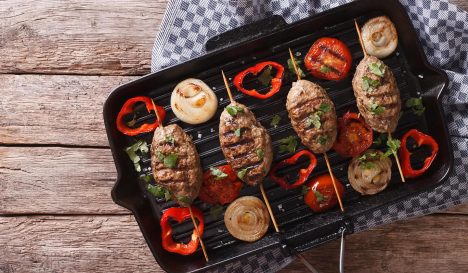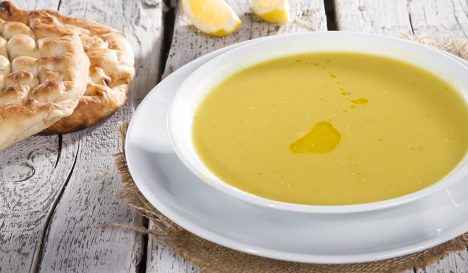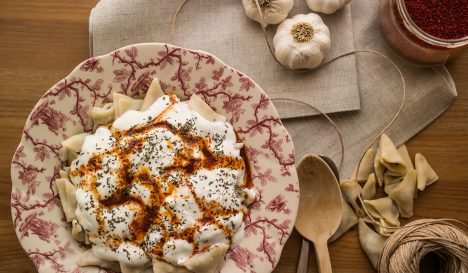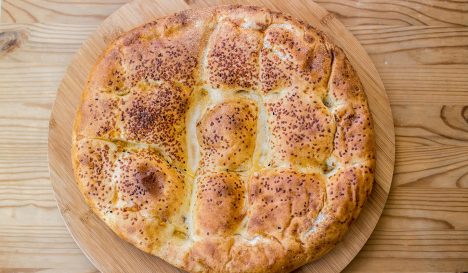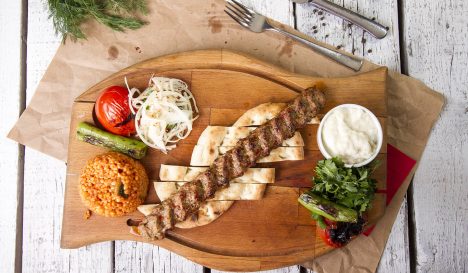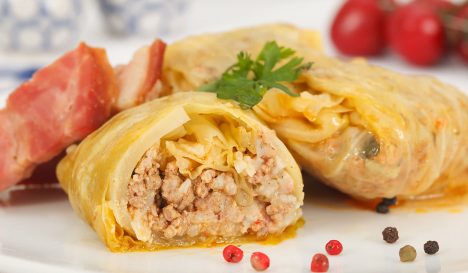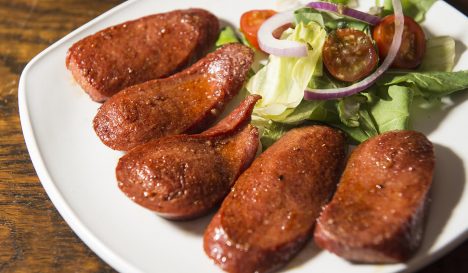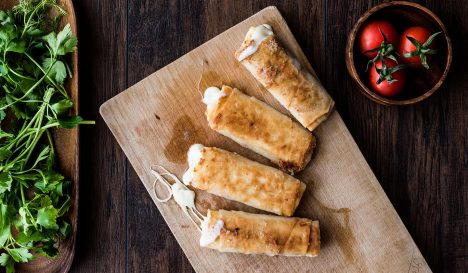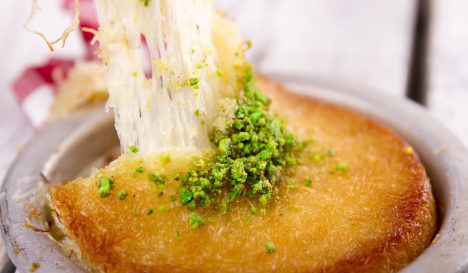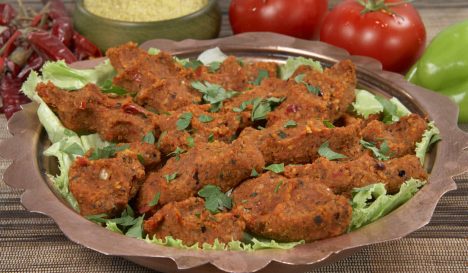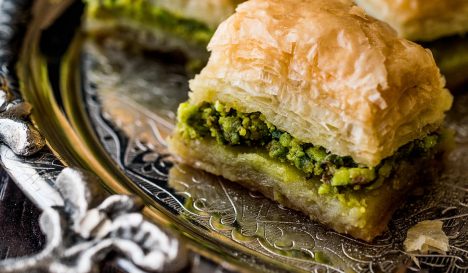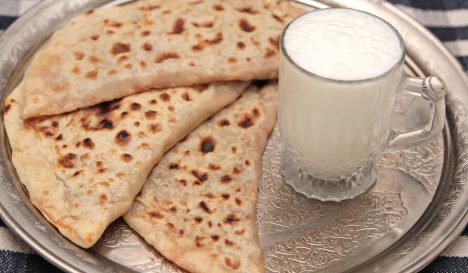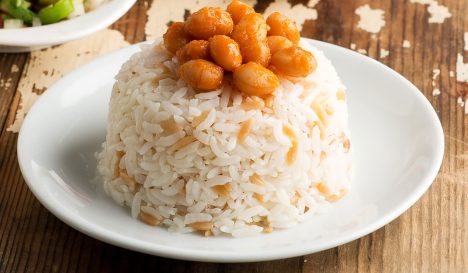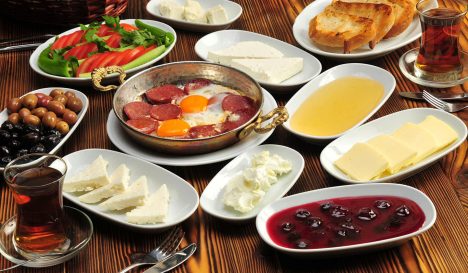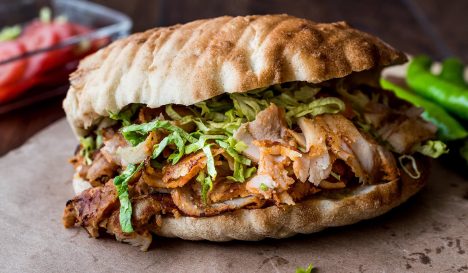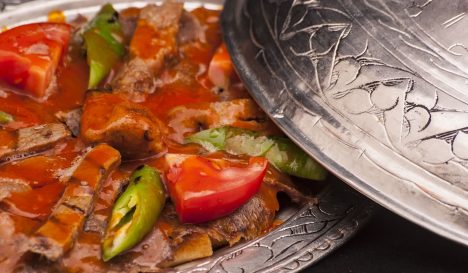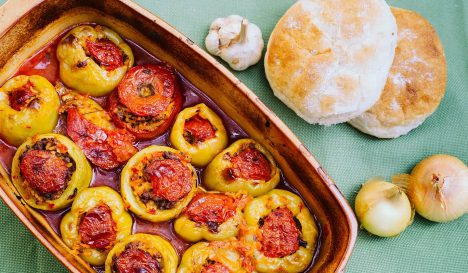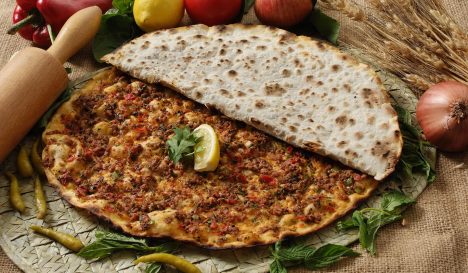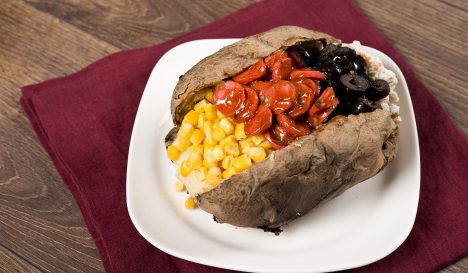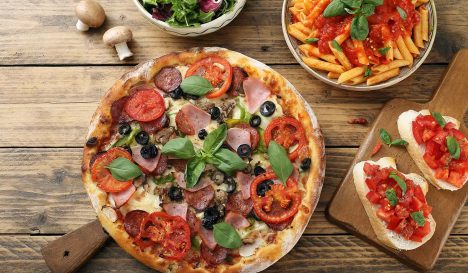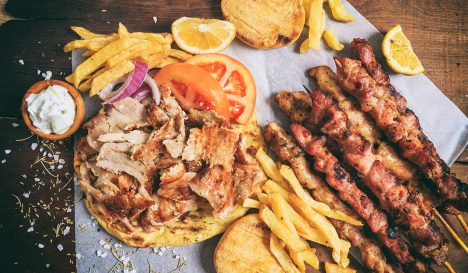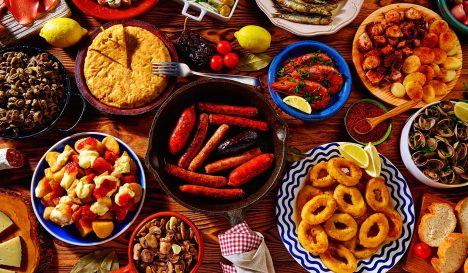Turkish cuisine
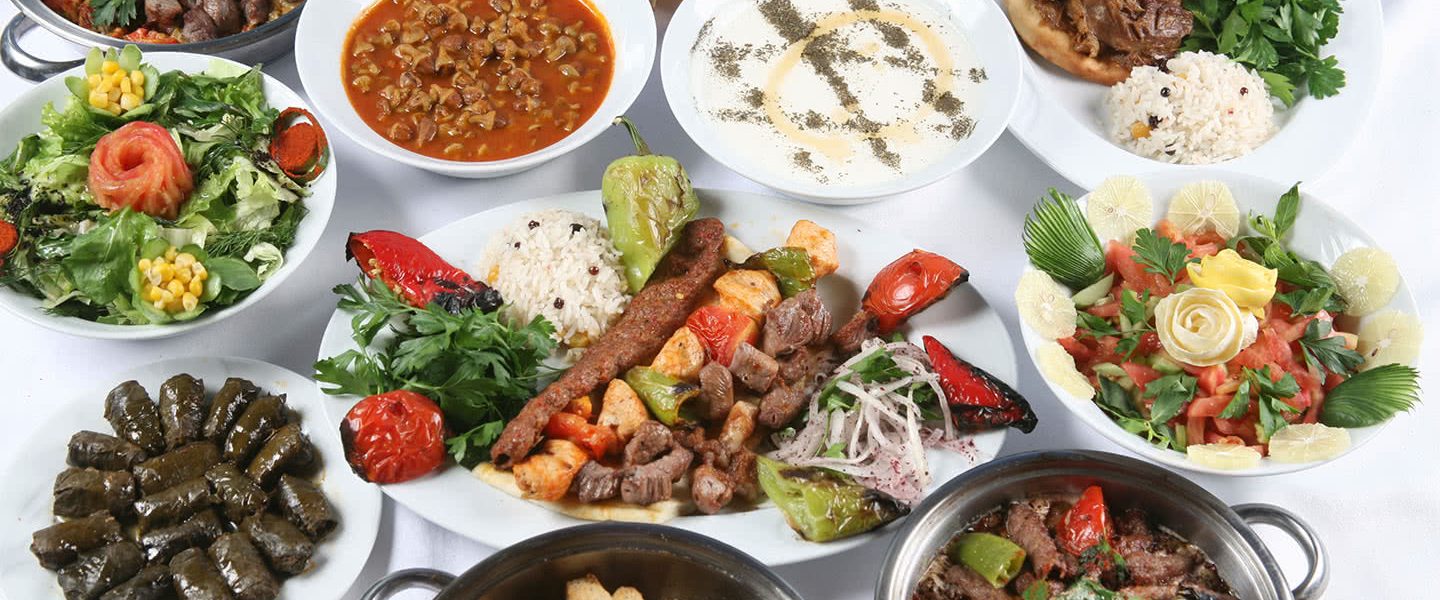
No less than 97% of Turkey is located on a huge peninsula, surrounded by nothing but sea: the Black Sea, the Marmara Sea, the Aegean Sea and the Mediterranean Sea. This part of the country is called Asia Minor or Anatolia and belongs to the Asian continent. The other 3% belongs to Europe and is called European Turkey or Eastern Thrace. Istanbul is the only city in the world spread across two continents, with one foot in Europe and one in Asia.
- A fusion of East and West
- Specialists
- Outside influences
- Typical ingredients
- Turkish dining etiquette
- For beginners
- Discover these Turkish dishes
A fusion of East and West
Turkey’s geography is reflected in its cuisine; elegance and robustness alternate. On the one hand, people still eat the refined dishes of the past, dating from the heyday of Istanbul, when the Ottomans prevailed and the “art of eating” really flourished. On the other hand, there is the regional cuisine of Anatolia, with hearty country dishes that depend on climate and living conditions.
In recent decades, Turkish cities were full of Anatolians looking for work and a better life. They brought rustic dishes with them, and a mixture of kebabs and pilav, sweet filo pastries and stuffed vegetables (dolma) was created in the cities. In this way, Turkey also remains at a crossroads in culinary terms: old versus new; rich versus poor; Europe and Asia; sea and land.
Specialists
In the heyday of the sixteenth-century Ottoman Empire, more than thirteen hundred chefs worked in the Topkapi Palace, who prepared nothing but the best of the best for the sultan, his harem and his guests in huge, domed kitchen buildings. There was a chef for every kind of food: one made soup, the other pie, and others made meat dishes or sweets. This type of specialisation continues to a certain extent. In Istanbul, you buy your baklava in a baklavaci and pasta in a borekci. In a muhallebi, you eat nothing but Turkish milk pudding. Kahvalti salonu serve breakfast, in a corbaci, one eats soup, pidecisi serve sandwiches and pizzas, and kebabci make kebabs.
Outside influences
The palace cooks of the sultan came from all corners of the Empire, from the Eurasian steppes to the Caucasus Mountains and the Russian forests. Inspiration was found in the kitchens of Persia, the Arab world, and even in Western Europe. The arts of the chefs led to an elegant, aristocratic cuisine that was certainly not inferior to French or Chinese cuisine. The result was a melting pot of dishes that are still being cooked, albeit as simpler versions.
Typical ingredients
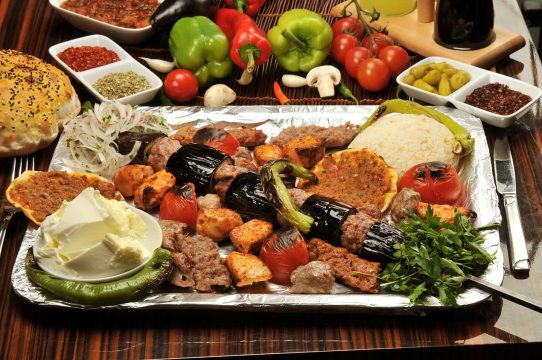
Everything is available in Istanbul, elsewhere the typical ingredients vary with the region and depend on the climate, which is diverse. On the Aegean and Mediterranean coasts, the climate is subtropical – warm summers and mild winters – while in Central Anatolia, Southeast and South Anatolia, dry summers alternate with cold winters.
One staple item that should be present on any Turkish countertop is Turkish bread (ekmek). You will find a bakery on almost every street corner and fresh bread is baked twice a day. Ekmek appears with every meal, whoever you are, wherever you are.
Yoghurt originates from the steppes of Turkey, where it was made by nomads, first from horse’s milk and later, when they settled down and started to keep cattle, from cow’s milk. A dollop of yoghurt is added to almost every dish, in addition to a piece of bread. Yoghurt is often mixed with garlic and some dry mint, making a refreshing dip. Yoghurt is also used to make cheese and ayran.
Cheese is another dairy product that is highly regarded in Turkish cuisine. It is eaten during breakfast (kahvalti), in salads, as a snack and even in sweet desserts (kunefe). There is goat’s cheese, sheep’s cheese and cow’s milk cheese; fresh cheese, white cheese, soft cheese and hard, aged yellow cheese. In Anatolia, no fewer than 193 different cheeses are made and many of them never leave their village of origin. The best-known Turkish cheeses are beyaz penir (fresh white cheese), taze kasar (a type of mozzarella) and hellim (halloumi). The latter cheese is originally a Cypriot cheese that is now widely available in supermarkets.
Pul biber are Turkish chilli flakes; dried crushed aleppop peppers to be precise. These peppers are popular for their beautiful balance of flavours: not too hot, fruity and aromatic. They are also a beautiful red.
Turkish dining etiquette
• Never refuse a glass of tea or coffee that is offered to you. Even if you just put it on your lips for an imaginary sip, that’s better than saying no. Your glass will always be topped up as soon as it is more than half empty.
• Nobody refills their own tea or coffee glass. It is your job as a table companion to keep an eye on your neighbours’ glasses and to top them up if necessary. Your neighbours will look after your glass in the same way.
• You can order whenever you want in Turkish restaurants. You don’t have to order everything that you think you will eat upon arrival, as we are used to. If you fancy a lahmacun or suddenly feel like pilav, talk to your waiter and order.
• The serving order is somewhat old-fashioned at the Turkish table: first guests, then the oldest man, other men, children and, finally, the women.
For beginners
If you are new to Turkish cuisine, try the following menu for a quick overview of what the country has to offer:
Appetiser
Sarma – Stuffed vine leaves with a yoghurt dip are a great start to a Turkish meal.
Soup
Mercimek Corbasi – This soup of red lentils can appear anywhere and anytime on the Turkish dining table, from an early breakfast to a late night snack.
Main course
Doner Kebab – The doner kebab is the most famous Turkish dish in the world.
Dessert
Kunefe – The delicious dessert, kunefe is highly recommended. It consists of crispy filo pastry with a cheese filling topped with sweet, sugary syrup.

